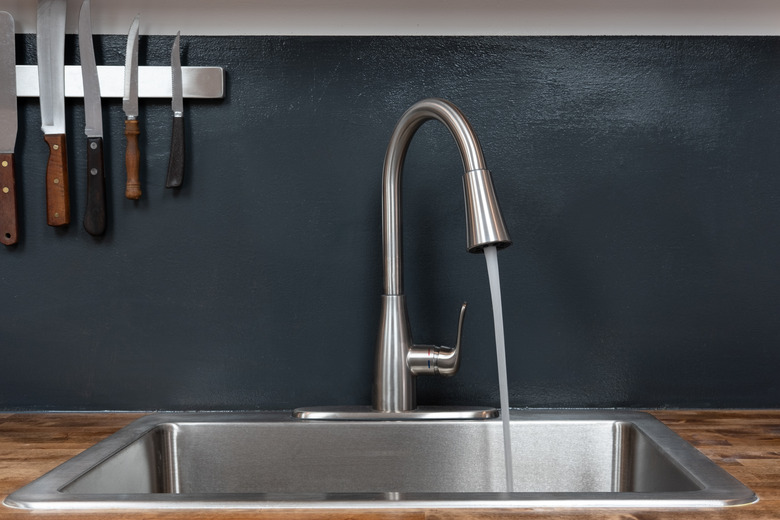How To Remove The Water Flow Limiter On A Grohe Kitchen Faucet
If your Grohe kitchen faucet low water pressure is hindering your work by taking too long to rinse your dishes or fill the sink, you may need to remove the Grohe flow restrictor from the faucet. But first, you may want to go through a few easy troubleshooting steps to make sure your Grohe kitchen faucet flow problems are actually caused by the restrictor, also called a water flow limiter, instead of another common source.
Grohe Kitchen Faucet Flow Problems
Grohe Kitchen Faucet Flow Problems
For a Grohe kitchen faucet low water pressure problem, the culprit may be outside your home instead of in the water flow limiter at the end of your kitchen faucet. If your municipal water supply is delivering water at less than 40 psi, removing this water flow limiter may not sufficiently increase the water flow. And if you have a well, the well pump may be on its last leg. Low water pressure may also be caused by clogged pipes, incorrectly sized pipes or water valves that are only partially open.
Start With the Check Valve
Start With the Check Valve
Before troubleshooting any "big" potential problems like pipes and pumps, start with the check valve on your kitchen faucet. Simply remove the spray head by unscrewing it and turn on the water to check the flow. If the water flow is heavy from the faucet without its attached spray head, it's time to take a closer look inside the spray head.
By using a screwdriver, press down on the check valve and hook it to remove it from the spray head. Flush water through both sides of the check valve to dislodge any trapped debris. If you can't remove all the debris, replace the old check valve with a new one.
Components of Faucet Aerators
Components of Faucet Aerators
If the aerator is clogged with debris, this will restrict the flow of water through the spray head. Aerators have three main parts — mounting runs, a mesh screen and a water flow restrictor, also called the limiter. The screen and the restrictor can become clogged, but you can clean or replace them to increase the water flow. The water flow restrictor is the part of the aerator that's connected to the end of the faucet spout.
Remove Grohe Flow Restrictor
Remove Grohe Flow Restrictor
Your Grohe faucet, such as an F7 model, may have come with a wrench that's designed just for removing the aerator. After inserting the tool between the aerator and the ring, you simply pop out the ring. Turn over the wrench and use the other side to insert into the spray head and turn counterclockwise to remove the aerator.
If your Grohe faucet did not come with this wrench, you can use pliers to unscrew the aerator. To protect your faucet's finish, cover the area where you'll use the pliers with painter's tape. Turn the aerator counterclockwise with the pliers until you're able to remove it by hand.
Once you've removed the aerator from the faucet spout, you can now remove the water flow limiter inside the aerator. It's the part with the holes in it.
Cleaning the Aerator
Cleaning the Aerator
You can replace the aerator to your faucet without the flow limiter to see if it increases the water pressure from the faucet. But you can also clean the aerator, which may also increase the water pressure. Simply soak the aerator in a 1:1 mixture of water and white vinegar for 10 to 15 minutes. After this soaking period, scrub the aerator and rinse it thoroughly. Replace the aerator by screwing it onto the faucet spout with a clockwise motion.
